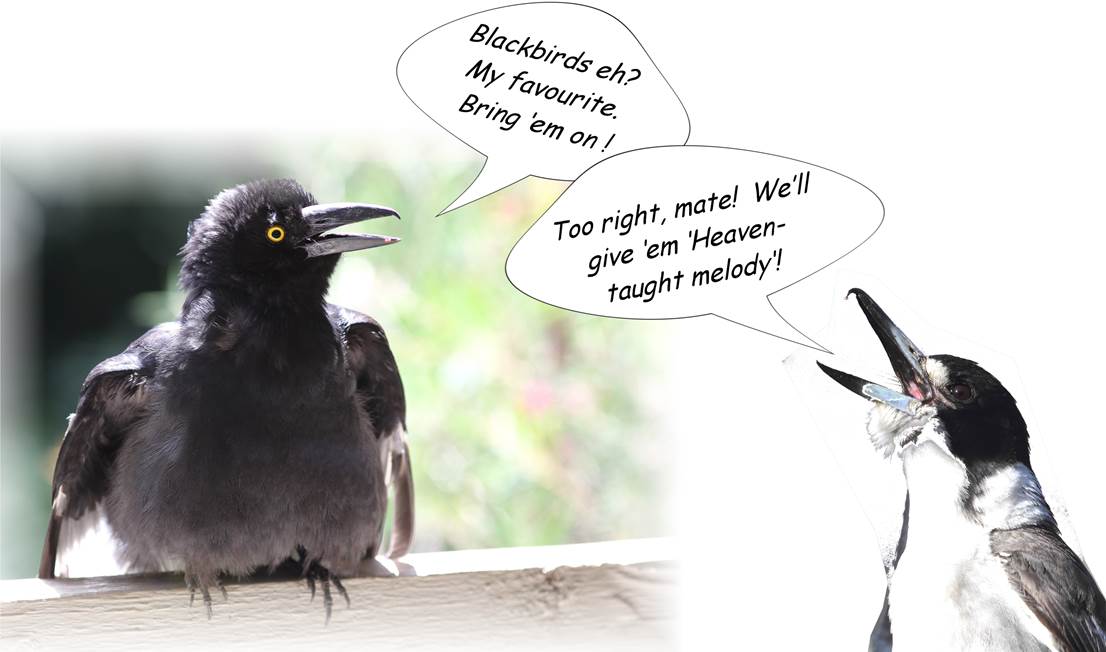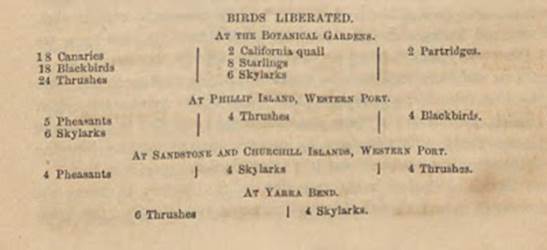
From: Robin Hide [
Sent: Friday, 26 January 2018 9:45 PM
To: Canberra Birds
Subject: [canberrabirds] Out of area- Acclimatisation Society of Victoria Reports 1861-1872 digitised by Museums Victoria
This information - from the Biodiversity Heritage Library- may be of interest to some.-
http://blog.biodiversitylibrary.org/2018/01/if-it-lives-we-want-it-exploring.html?utm_source=feedburner&utm_medium=email&utm_campaign=Feed%3A+biodiversitylibrary%2FyMJa+%28Biodiversity+Heritage+Library%29
Robin Hide
“These reports have been digitized by Museums Victoria and are
now available on the Biodiversity Heritage Library..
or
https://www.biodiversitylibrary.org/bibliography/141530?utm_medium=social%20media&utm_source=blogger&utm_campaign=Book%20of%20the%20Month&utm_content=Museums%20Victoria#/summary
“The Acclimatisation Society was established in Victoria’s capital of Melbourne at a time when the city was experiencing
great economic and population growth. Gold had been discovered in the colony in 1851 and over the next 10 years the population grew from 76,000 to 540,000. The wealthy and educated flocked to Melbourne, and the 1850s saw the establishment of The University
of Melbourne, the National Museum of Victoria, the State Library of Victoria and many learned societies.
The Acclimatisation Society was governed by the colony’s most eminent scientists who believed that Australia’s plants and animals were greatly inferior to those in Europe. The Society’s first president Edward Wilson argued that animals indigenous to Australia
were practically useless, providing only 'a little sport and an occasional meal' (Gillbank, 1984).
At the Society’s inaugural annual meeting, members were roused with talk of "wharves laden with the fleeces of the alpaca…, rivers teeming with all sorts of fish, forests abounding with every variety of game, and our tables groaning with all the delicacies
which can be procured in the markets of London and Paris" (Acclimatisation Society
of Victoria, 1862b).
There was great nostalgia amongst the colony for the "delightful reminders of [their] early home". Frederick McCoy, foundation Professor of Natural Science at The University of Melbourne and first director of the National Museum, proclaimed that “English thrushes,
blackbirds, larks, starlings, and canaries” when “liberated” would enliven the "savage silence, or worse" with their "varied, touching, joyous, strains of Heaven-taught melody" (McCoy 1862).”

Birds liberated, from The First Annual report of the Acclimatisation Society of Victoria, 1862. Contributed to
BHL by Museums Victoria.
http://s.si.edu/2DEkbzh.
……….

